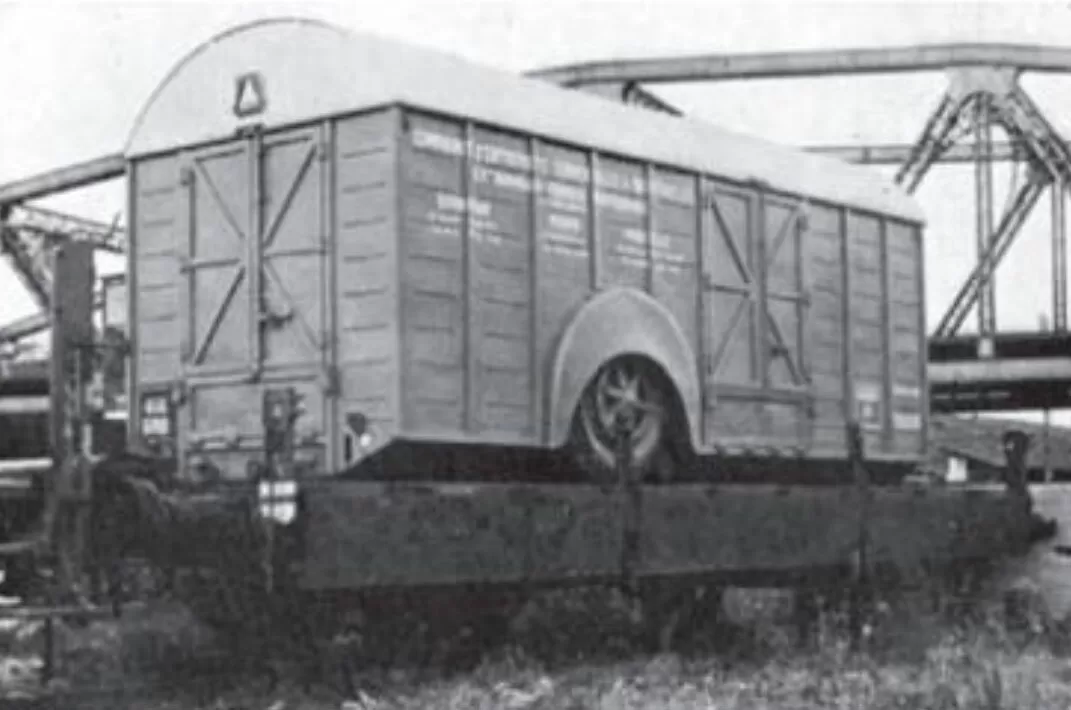Vehicle type:
Registration country:
Railway companies:
1937
November 17
SEREM, which filed its patent on November 17th, 1937, joined forces with the CODER establishments of Marseille-Saint-Marcel for the construction of the required material.
Sources: Les rails de l'histoire n° 4 - https://issuu.com/gayalanouvelleagence/docs/journal_4_site/10
1941
June 20
The French National Railway Company - SNCF protests and assures that it has established its conviction on the technical superiority of UFR trailers based on long experience and numerous adaptations to increase their solidity, which their rivals, in operation only since 1938, cannot take advantage of.
A compromise is found and the French National Railway Company - SNCF agrees to acquire 50 trailers for the SEREM - CODER system which roughly corresponds to the proportion of road carriers interested in this system
The decision is confirmed by the ministerial authorisation on June 20th, 1941 for the order of 250x UFR trailers and 50x SEREM - CODER trailers.
Sources: Les rails de l'histoire n° 4 - https://issuu.com/gayalanouvelleagence/docs/journal_4_site/10
1941
July 9
In the case of the SEREM - CODER system, the best proposal comes from the CODER company and a contract is signed on July 9th, 1941, for 25x vans (with a payload of 8 t) and 25x tanks (with a capacity of 8.000 l and two equal compartments). The constructions is the responsibility of the CODER workshops located in Marseille in Saint-Marcel district.
The trailers ordered are primarily intended for road carriers who have agreed to abandon part of their long-distance services in favour of rail transport. During the war, thirteen companies signed agreements to this effect: in exchange for handing over a quota of goods to rail transport, they are guaranteed to receive a certain number of these new trailers (either the UFR system or the SEREM - CODER system to choose from) in full ownership (the financing is covered for about 30% by the road companies and for 70% by the French National Railway Company - SNCF) and the insurance of having the platforms and wagons necessary for their loading / unloading and their transport. Amendments are subsequently made to take into account possible obstacles to movement by rail and destruction of equipment attributable to acts of war.
Sources: Les rails de l'histoire n° 4 - https://issuu.com/gayalanouvelleagence/docs/journal_4_site/10
1945
As of December 31st, 1945, only 4x SEREM - CODER-type trailers are in service.
But the French National Railway Company - SNCF anticipate an increase in demand after the war and even if the 1941 order is not completely delivered they do not hesitate to order 30x road trailers in the summer of 1945 and 25x carrier wagons in the winter if 1945.
Sources: Les rails de l'histoire n° 4 - https://issuu.com/gayalanouvelleagence/docs/journal_4_site/10
1946
The definitive renunciation to the CEREM-CODER system is the result of the technical adjustments which had to be made to this equipment, as the French National Railway Company - SNCF feared in 1941. The announced advantage was not to require any specific development for the carrier wagons. However, in order to prevent the trailers from ripping during transport, the wagons had to be very quickly equipped with a sort of "cradle", the installation and removal of which required a lot of work. Coupled with the fragility of the trailers, in particular that of their wheel retraction system, this drawback became crippling for the French National Railway Company - SNCF , especially as the CODER establishments refused to undertake any improvement work.
Sources: Sources: Les rails de l'histoire n° 4 - https://issuu.com/gayalanouvelleagence/docs/journal_4_site/10
Do you have additional informations regarding this vehicle?
Help us writing the history of SEREM - CODER freight wagon! Your knowledge is precious for us and the entire community, do not hesitate to share your facts, photos or videos:
Latest update on the 15th of August 2021 at 19:40
Contributor(s): Tudor C.
Discussion forum



